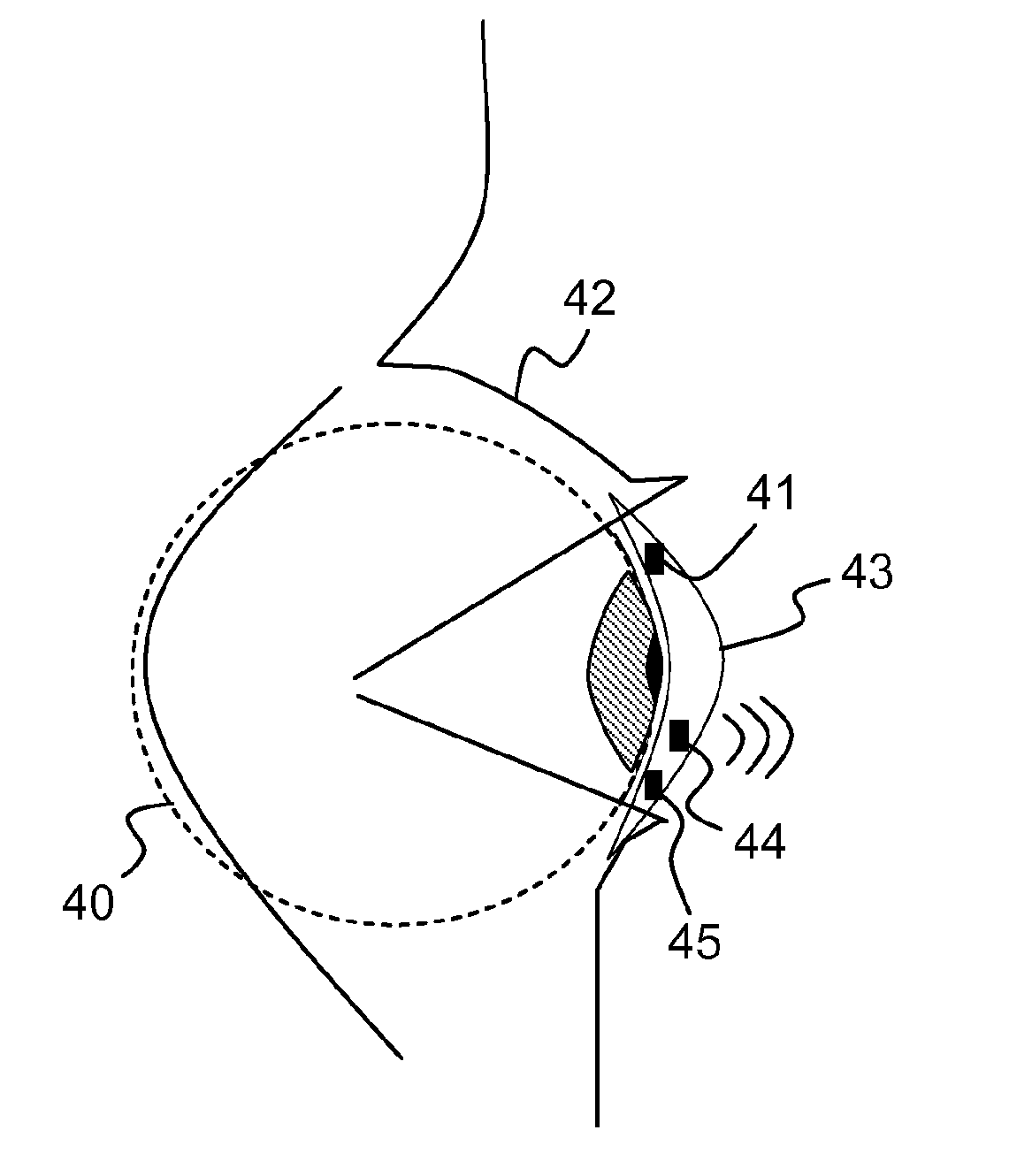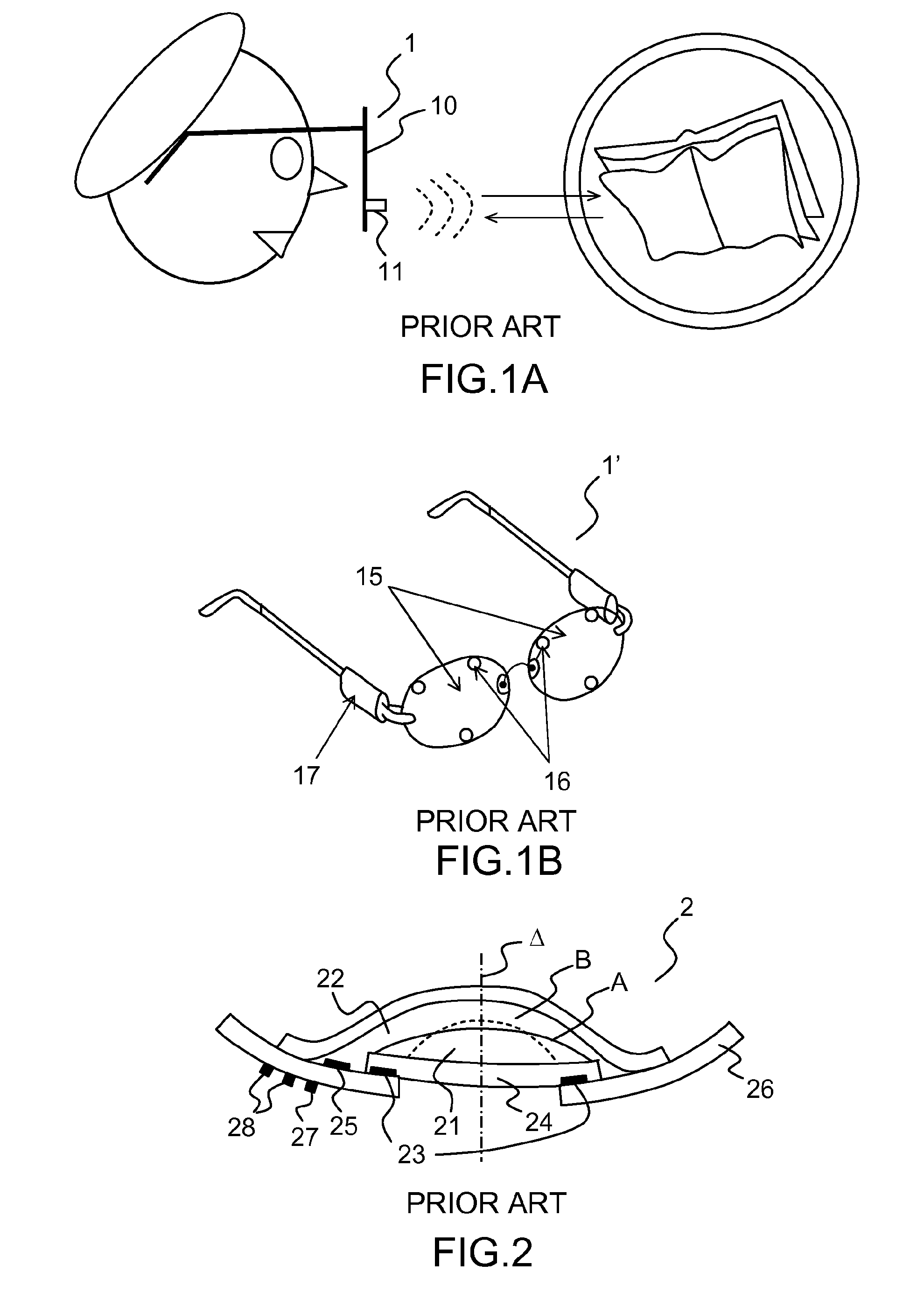Electronically controlled focusing ophthalmic device
a technology of ophthalmology and electric control, which is applied in the field of electric control focusing ophthalmology, can solve the problems of high power consumption, limited power consumption of automatic focusing lenses, and limited power consumption of automatic focusing lenses, and achieve the effect of keeping power consumption low
- Summary
- Abstract
- Description
- Claims
- Application Information
AI Technical Summary
Benefits of technology
Problems solved by technology
Method used
Image
Examples
Embodiment Construction
[0050]FIG. 4 shows an example of an electrically controlled focusing ophthalmic device according to a first preferred embodiment. The device comprises an active contact lens 43 to be placed on the eye 40 of a patient and comprising a liquid / liquid interface (not shown on FIG. 4) actuated by electrowetting, thus forming an active liquid lens. It further comprises a distance measuring device 44 for measuring the distance of an object to be focused on. For example, the range meter is a sensor enabling the measurement of the eye convergence of the user as described in the prior art. The device also comprises an electronic module 45 with a power supply, a driver for the liquid lens and a controller. The driver is adapted to apply to the liquid lens a voltage dependent on the desired focusing. The desired focusing may be calculated from the distance of an object measured by the distance measuring device 44, thus making an automatic focusing of the device. Reversal of the polarization of t...
PUM
 Login to View More
Login to View More Abstract
Description
Claims
Application Information
 Login to View More
Login to View More - R&D
- Intellectual Property
- Life Sciences
- Materials
- Tech Scout
- Unparalleled Data Quality
- Higher Quality Content
- 60% Fewer Hallucinations
Browse by: Latest US Patents, China's latest patents, Technical Efficacy Thesaurus, Application Domain, Technology Topic, Popular Technical Reports.
© 2025 PatSnap. All rights reserved.Legal|Privacy policy|Modern Slavery Act Transparency Statement|Sitemap|About US| Contact US: help@patsnap.com



